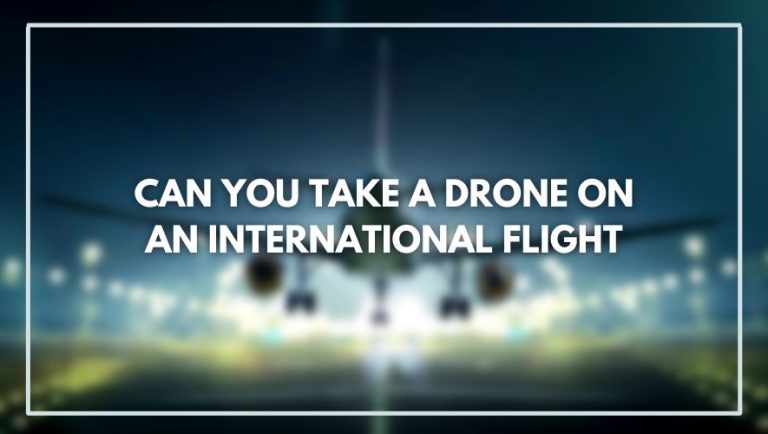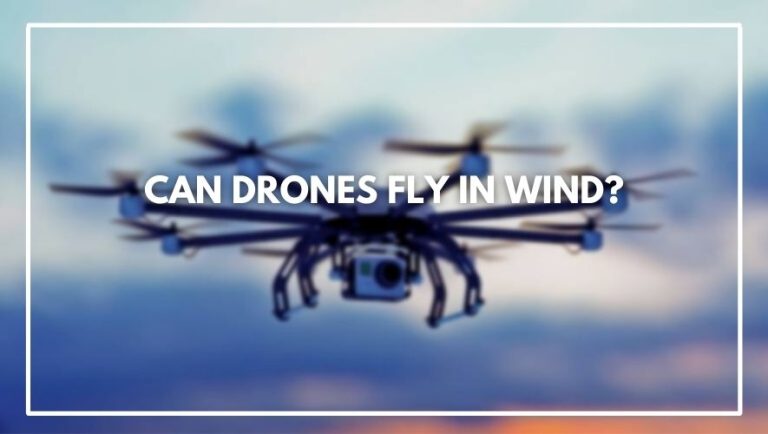What is a gimbal on a drone and how does a gimble works? Let’s answer shortly,
A gimbal is a device that stabilizes a drone camera’s motion regardless of movement, using three rings and three motors to keep a level position during roll and tilt shifts.
Gimbal on a drone allows it to rotate 360 degrees around its own axis in the same way that your head can move without moving your body. The gimbal is used on a drone’s camera to stabilize it while keeping it level with the horizon.
What Are Drone Gimbals And What Do They Do?

For drones, a gimbal is a device that provides stabilization. If you’ve ever seen shaky footage shot from a drone, it’s likely because the drone didn’t have a gimbal.
Generally speaking, without at least one gimbal (most drones come with two), you’re going to end up with footage that’s jittery at best and completely unwatchable at worst.
Gimbals are used on all types of camera equipment, including smartphones and even film cameras. Imagine trying to shoot video with an old-fashioned handheld camera: any slight movement is amplified by the lens and results in an unstable shot.
The same thing happens when you mount your phone or camera to your drone. A gimbal protects your camera from outside forces that could potentially knock it out of place, making sure every frame stays smooth and stable.
Gimbals for drone cameras need to be lightweight but strong so they don’t interfere with the weight of the aircraft while still keeping footage smooth and clear.
Drone gimbals also generally tend to be more durable since they have to stand up to some wear and tear over time, especially if you use them a lot in harsh environments or take them traveling with you often.
The Stabilization That A Gimbal Provides

In addition to the drone’s controller, the gimbal and camera combination is one of the most important parts of a drone. The gimbal and camera are responsible for providing the stabilization of the camera during flight. This means that regardless of how badly your drone may be shaking or swaying in flight, your camera will always be steady and ready for that perfect shot.
There are three axes that a gimbal is designed to stabilize: pitch, roll and yaw.
Pitch refers to when a drone tilts up or down, or if you were holding it straight up in front of you, it would mean tilting forward or backward.
Roll relates to tilting on its side while in flight, so ‘rolling’ left to right as if you had it on its side like a wheel.
Yaw describes moving the nose left or right without changing the direction that the aircraft is actually flying–so if you were flying straight ahead but twisting your nose/camera left and right while keeping your body pointed forward.
How Does a gimbal works on a drone?

Camera Loading
A gimbal is the mechanical system that allows a camera to be stabilized on a moving platform. They’re powered by three brushless motors that are able to move the camera independent of the drone it’s mounted on, allowing for smooth and steady footage even when your drone is flying at high speeds or in gusty conditions.
The gimbal is what makes it possible for cameras like the GoPro HERO4 Black to capture professional-looking images from drones like the Yuneec Typhoon Q500 4K or DJI Phantom 3 Professional.
Gravity Sensor
Now that you understand how a 3-axis gimbal works, we can talk about the part of the drone that really makes it possible: the inertial measurement unit (IMU).
The IMU is a small computer chip inside your drone that contains an Accelerometer, Gyroscope and Magnetometer. The Accelerometer measures the linear acceleration of movement along all three physical axes X, Y and Z.
The Gyroscope measures the angular rotational velocity of movement along each axis. These sensors work in conjunction to allow your drone to stabilize itself by actively measuring its orientation and making adjustments to keep it level as you fly.
The Magnetometer measures magnetic field strength around your drone in order to determine which way is north. This allows GPS stabilization and geo-fencing (so your drone won’t fly too far away from you) to work correctly, as well as enabling features like return-to-home in case of signal loss or low battery.
Gimbal & Stabilization
A drone gimbal is a pivoting device that attaches to the camera of a drone and acts as the mount for the camera. The gimbal counteracts the shaking and vibrations of the drone, keeping your footage smooth, sharp and steady.
Stabilization software also works to compensate for these shakes and vibrations. Stabilization software analyzes what’s happening in your shot then adjusts your footage accordingly. When you see smooth aerial shots in movies or TV shows, like this one from Game of Thrones:
the result is most likely a combination of stabilization software and a gimbal working together.
The purpose of both is to keep your footage steady while ensuring it stays pointed in the right direction at just the right angle, despite all those pesky shakes and vibrations caused by wind or turbulence, etc.
When Should You Use A Gimbal For A Drone?
Although gimbals are typically used for drone video, they can still be used for photography. They are really only necessary for drones that have high-end cameras with very high resolutions and wide angle lenses.
For those using higher-end drones, you may want to consider using a gimbal. Although there is never a guarantee that the quality will improve drastically, it is worth the investment if you’re looking to get into professional videography or photography.
Gimbal Maintenance
- Keep moving parts lubricated.
- Do not use water to clean the lens.
- Clean the lens regularly and avoid touching it with your fingers.
- Perform re-calibrations every three months.
Gimbals Let Your Drone Camera Stay Level
Let’s take a look at what gimbals do and how they help your drone fly and perform more smoothly.
Gimbals are primarily used for aerial photography, but some pilots use them for other purposes as well. While fixed-wing aircraft have been used for aerial photography since the mid 20th century, the technology didn’t exist to capture smooth footage in flight until gimbals were developed to stabilize the camera onboard.
The first gimbal was developed by German inventor Frederick Stolze in 1885 and was intended to be a device that would keep a compass level while it was adrift on water. Since then, gimbals have been used in aviation, film production, robotics and more. In addition to keeping cameras level during flight, they can also be used to hold other objects steady.
For example, one common application is panning; if you want to sweep the camera across an object or landscape without moving the drone itself, you might use a panning gimbal mount instead of changing course with your remote control. Whatever your application might require you to do with your drone camera, there’s likely a way that using a gimbal can help stabilize your shot and make it look as good as possible.
How to Use DJI Gimbal?
Using a DJI gimbal is easy and straightforward. Here are some steps to get started:
- For the DJI Pocket 2, push two buttons to start filming.
- For the DJI OM 5, use the DJI Mimo app to select camera modes and press a button to take a photo or start recording.
- For the DJI Osmo Mobile 6, enable Gesture Control OFF, select “Follow and Shoot” in DJI Mimo, and perform a palm or V gesture for one to two seconds when facing the camera.
- For the DJI OM 4, place and center the magnetic phone clamp on your mobile device in a position that the DJI logo is in line with your phone’s camera.
- For more detailed instructions, check out tutorials and user manuals online.
Frequently Asked Question (what Is A Gimbal On A Drone)
What Is A Gimbal On A Drone Exactly?
A gimbal is a device that holds the camera.
The gimbal has two purposes: stabilizing the camera, and keeping it steady even when your drone is moving. The latter is called “stabilization” because it keeps your video smooth and easy to watch, even when you’re flying fast or taking sharp turns.
Why Do I Need A Gimbal?
- A gimbal is used to help stabilize the camera.
- It helps to keep the camera level when it’s moving, allowing you to capture smooth footage without needing a tripod.
- The vibration caused by moving the drone is reduced when a gimbal is attached because it absorbs some of this movement and isolates your camera from it. This means less blurry footage!
Do All Drones Have A Gimbal?
No, not all drones have a gimbal, but a three-axis gimbal is essential if you want usable footage.
Does The Location Of The Drone Effect The Gimbal?
The location of the drone does affect how well it is able to stabilize. The further away from the ground, the better a gimbal will be able to keep your footage steady. This means that if you’re flying in an area with lots of trees and buildings and other obstacles around, then you’ll want a gimbal that can handle those situations.
A lot of people have had trouble getting smooth footage when they try flying indoors or close to trees because their drones aren’t designed for such conditions.
Conclusion
Gimbals are one of the most important devices for taking steady photos and videos from your drone. They are what make a fluid video possible that shows you smooth video.
It’s pretty simple to use a gimbal, but it can also make a big difference in the quality of your video footage. Essentially, a gimbal is a device that allows you to mount your camera on a moving object, such as a drone or robot.
Inside the gimbal is a three-axis motorized mechanism that uses software and circuitry to keep your camera steady during movement. Theoretically, this means that you can mount your camera on practically any moving surface and get great shots. It’s a very useful device if you want to do things like film high-speed chases or sports games.






